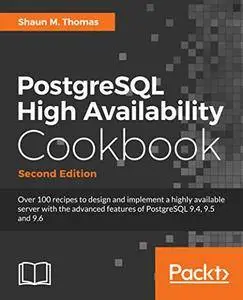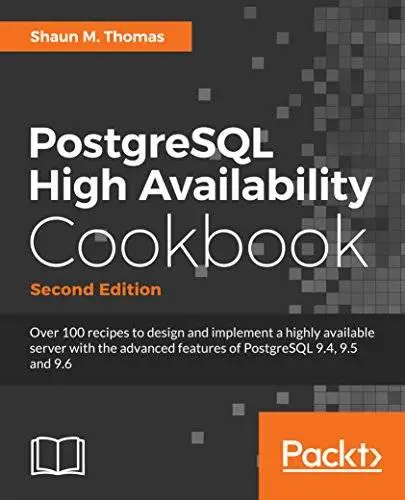Shaun M. Thomas, "PostgreSQL High Availability Cookbook, 2nd Edition"
ISBN: 178712553X | 2017 | True PDF | 536 pages | 4 MB
Key Features
Create a PostgreSQL cluster that stays online even when disaster strikes
Avoid costly downtime and data loss that can ruin your business
Updated to include the newest features introduced in PostgreSQL 9.6 with hands-on industry-driven recipes
Book Description
Databases are nothing without the data they store. In the event of a failure - catastrophic or otherwise - immediate recovery is essential. By carefully combining multiple servers, it s even possible to hide the fact a failure occurred at all.
From hardware selection to software stacks and horizontal scalability, this book will help you build a versatile PostgreSQL cluster that will survive crashes, resist data corruption, and grow smoothly with customer demand. It all begins with hardware selection for the skeleton of an efficient PostgreSQL database cluster. Then it s on to preventing downtime as well as troubleshooting some real life problems that administrators commonly face. Next, we add database monitoring to the stack, using collectd, Nagios, and Graphite. And no stack is complete without replication using multiple internal and external tools, including the newly released pglogical extension. Pacemaker or Raft consensus tools are the final piece to grant the cluster the ability to heal itself. We even round off by tackling the complex problem of data scalability.
This book exploits many new features introduced in PostgreSQL 9.6 to make the database more efficient and adaptive, and most importantly, keep it running.
What you will learn
Protect your data with PostgreSQL replication and management tools such as Slony, Bucardo, pglogical, and WAL-E
Hardware planning to help your database run efficiently
Prepare for catastrophes and prevent them before they happen
Reduce database resource contention with connection pooling using pgpool and PgBouncer
Automate monitoring and alerts to visualize cluster activity using Nagios and collected
Construct a robust software stack that can detect and fix outages
Learn simple PostgreSQL High Availability with Patroni, or dive into the full power of Pacemaker.
About the Author
Shaun M. Thomas has been working with PostgreSQL since late 2000. He is a frequent contributor to the PostgreSQL Performance and General mailing lists, assisting other DBAs with the knowledge he's gained over the years. In 2011 and 2012, he gave presentations at the Postgres Open conference on topics such as handling extreme throughput, high availability, server redundancy, and failover techniques. Most recently, he has contributed the Shard Manager extension and the walctl WAL management suite. Currently, he serves as the database architect at PEAK6 Investments, where he develops standard operating procedure (SOP) guidelines to facilitate reliable server architecture among many other tasks. Many of the techniques used in this book were developed specifically for this extreme environment. He believes that PostgreSQL has a stupendous future ahead, and he can't wait to see the advancements subsequent versions will bring.
Table of Contents
Hardware Planning
Handling and Avoiding Downtime
Pooling Resources
Troubleshooting
Monitoring
Replication
Replication Management Tools
Simple Stack
Advanced Stack
Cluster Control
Data Distribution



